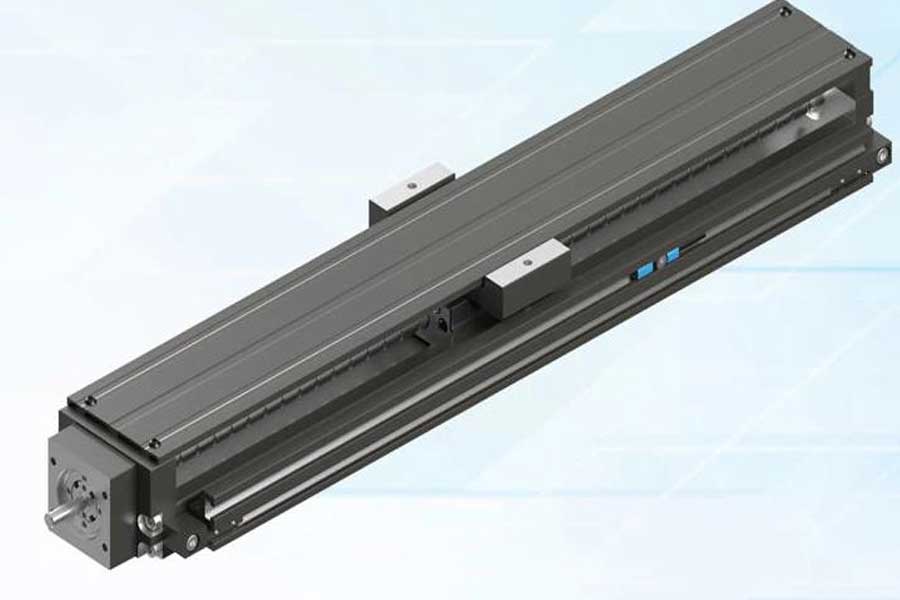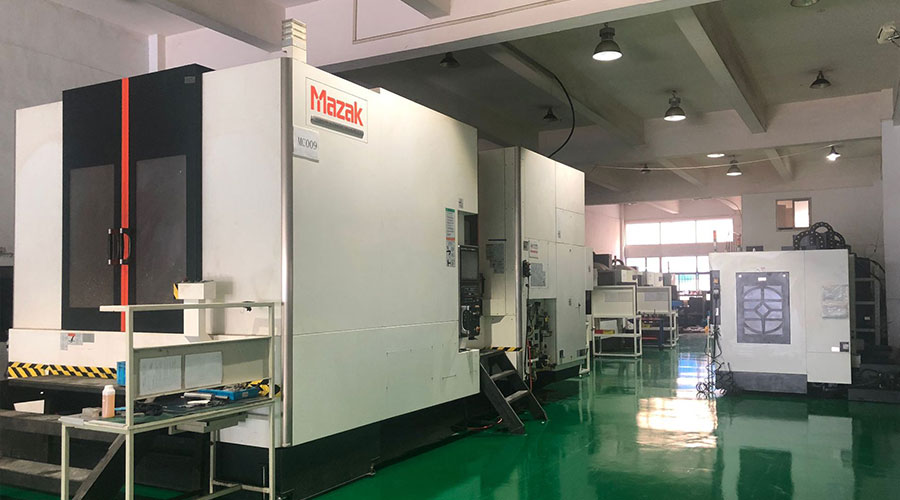·Semiconductor manufacturing, laser cutting machine tools, electronic assembly, and laboratory automation systems all require precise linear modules. These modules need to run smoothly with strict endpoint accuracy and minimal vibration.
·The housing design and structural materials of the module are the key factors that determine the long-term accuracy and repeatability.
·No matter how good the design and engineering, the linear module needs proper lubrication throughout its life cycle to maintain precise and stable movement.
Off-the-shelf linear modules are used in many different industries to move materials, products and production tools on a variety of machines.
When choosing a linear module, the machine designer has a variety of options, according to specific production and performance requirements. But in some industries and system applications, precise and precise movement is the most critical requirement.
Especially in applications such as semiconductor manufacturing, laser Cutting Machine tools, electronic assembly, and laboratory automation systems, precise linear modules are required. These modules need to operate with very tight endpoint accuracy and smooth operation, with minimal vibration throughout the entire motion cycle.
Understanding the key design and performance characteristics that distinguish precision linear modules can help machine and system designers choose the best products to meet the requirements of the machines they are building.
The need for precise movement
For laser cutting, automatic sampling systems in medical test equipment, or moving semiconductor wafers through manufacturing tools, ultra-precise and precise motion requires very stable, almost vibration-free motion during travel. Reaching the target endpoint with the greatest accuracy is the primary goal.
Stable movement is often critical to protect extremely fragile materials from linear travel caused by damage or degradation. Semiconductor wafers are a perfect example: they are extremely fragile, and a finished wafer may contain chips worth millions of dollars, depending on the size of the wafer.

Each wafer must be transported through hundreds of process steps. Every time it moves from one step to another, the vibration of the linear module may damage the wafer being processed and reduce its final value. The smaller the vibration, the lower the risk.
Endpoint accuracy is also critical to increasing productivity. If an electronic component tray passes through a high-speed automated assembly process, maximum production efficiency can be achieved when the linear module feeds the tray into the assembly tool with micron-level accuracy.
It is also important to note that this stable motion and end point accuracy must be repeated through thousands of motion cycles per day. If it takes a few milliseconds to adjust the position of a part, these milliseconds will increase production time by several hours, thereby reducing output, possibly increasing costs and affecting delivery schedules.
In order to achieve these goals, we must consider the key design, material, structure and function of high-performance precision linear modules.
Building materials
The housing design and structural materials of the module are key factors that determine long-term accuracy and repeatability.
In the field of linear modules, aluminum or steel is most commonly used to make housings or “profiles.” Aluminum housings are often used in more standard linear modules because they can be extruded cost-effectively to meet a wider range of module sizes and lengths.
However, it is important to consider precision linear modules made of steel chassis. Compared with aluminum-based modules (which are also very stable, but not at the level that steel enclosures can support), these enclosures generally exhibit less modular flexibility and deviate from the desired path of travel.
Modular flexibility makes the module adopt the shape of the rack in which it is installed. For extruded aluminum enclosures, if there is some deviation (for example, the place where the module is installed is twisted or bent), the deviation can be reflected.
Since the precision linear module has a machined steel housing, this deviation can be prevented, thereby ensuring very high flatness or straightness. This helps to reduce vibration, reduce end point accuracy and position repeatability. In addition, look for modules with machined reference edges and integrated rails on the housing. Some companies like Bosch Rexroth even allow users to specify which side has the machine ground reference edge for faster installation and easier alignment.
Choose the right size correctly
When very precise operation is required, make sure to choose the right size components to handle the load. For example, axial or torsional loads may require wider or heavier parts than simple radial loads. In addition, for many advanced applications in machine tools, semiconductor production, and electronics manufacturing, the production system is relatively small and requires compact precision modules that can be easily installed in narrow machine spaces. Many suppliers offer different sizes.
In addition, it is important to consider other basic linear motion design criteria, such as the operating environment of the system, the installation angle of the load, the required speed, the travel distance and the required duty cycle. This is called LOSTPED (load, direction, speed, travel, accuracy, environment, and duty cycle) in the industry.
Motion components
Accurate and stable motion is also a product of the motion components that drive the linear module. For precision linear modules, ball screw drives provide the best solution.
Ball screw drives are very efficient in converting rotary motion into linear motion. As mechanical drive elements, they can be installed in the XYZ direction and moved with the required accuracy and repeatability.
The ball screw with full contact seal provides a unique combination of high stiffness, high precision and considerable speed, making it very useful in a variety of precision motion applications. In particular, their ability to withstand large axial loads generally makes them a better choice than linear motors, especially in metal, wood and stone cutting applications.
Equally important is the design of the linear guide in the precision module. The accuracy of a linear guide depends on many factors: the authenticity of the track on which the slider or bearing travels, the raceway inside the bearing through which the balls or rollers travel, and the flatness of the guide rail mounting surface.
One of the most important areas to evaluate is whether the ball recirculation inside the slide is smooth when the slide moves along the track. Uniform movement of the ball in the recirculation chamber or slight pivoting of the track system about its axis can adversely affect applications with extremely high accuracy ranges.
Any deflection or clearance will reduce accuracy, and any roughness in the recirculation of the balls will cause inaccuracies. In order to solve this problem, leading linear module suppliers provide guide rails that optimize recirculation at critical transition points. When the balls circulate in the bearing raceways, they can consistently provide extremely smooth motion.
A precision linear module with a ball screw assembly and optimized linear guides combined with a steel housing can provide many key features required for high-precision, high-speed automation systems.
Lubrication and sealing
No matter how excellent the design and manufacture of the linear module are, proper lubrication is required throughout its life cycle to maintain precise and stable motion. One way to ensure that lubrication is effectively integrated into the overall system maintenance practice is to select the precise module to make it easier and more convenient to continuously lubricate the module.
Most precision modules can be initially lubricated with conventional industrial lubricants. Other modules can choose more advanced lubrication products, for example, to meet the requirements of clean rooms or the electronics industry.
Bosch Rexroth recently upgraded its precision module series to include more advanced LSS standards and LSC clean room lubricants. You can also choose to use liquid grease to connect to the central lubrication system. Automatic relubrication improves operational reliability and eliminates human error when performing manual lubrication.
Linear modules require lubrication due to moving parts, but if the module is not properly sealed, the moving parts will produce tiny airborne particles (the lubricant itself can also be dispersed in the air). It is important to evaluate the sealing options provided by precision linear module suppliers in advance, especially for clean room environments or laboratory automation systems with sensitive biological samples.
Look for precision ball screw nut and linear carriage assembly, and seal from both sides with the ball screw assembly seal. This design significantly reduces the risk of lubricant leakage to the outside.
Configuration and technical support
The last element to consider when selecting a precision linear module is the level of technical support that the supplier can provide to help machine manufacturers select, specify, configure, and order the required modules.
Choosing a linear module supplier with easy-to-use step-by-step linear adjustment and configuration tools can help machine designers quickly configure and order the correct modules when needed. Some companies can also select and adjust the size of the machine, motor and drive combination with a single tool.
When direct assistance is needed, it also makes sense to cooperate with linear module suppliers who have extensive experience in linear motion technology. These companies provide technical support from linear motion engineering experts via telephone, e-mail or real-time online chat tools. In many cases, when machine manufacturers are uncertain about the specific size and performance requirements of their applications, these experts will solve these challenges in the past.
For today’s most advanced automation systems, achieving high levels of throughput does not require sacrificing speed and quality. Especially for industries and applications that require ultra-precision linear motion, vibration-free transmission and extremely strict endpoint accuracy, choosing the right precision linear module can play a vital role in manufacturing productivity, efficiency and quality.
Link to this article: Five key factors for choosing precision linear modules!
Reprint Statement: If there are no special instructions, all articles on this site are original. Please indicate the source for reprinting:https://www.cncmachiningptj.com/,thanks!
 3, 4 and 5-axis precision CNC machining services for aluminum machining, beryllium, carbon steel, magnesium, titanium machining, Inconel, platinum, superalloy, acetal, polycarbonate, fiberglass, graphite and wood. Capable of machining parts up to 98 in. turning dia. and +/-0.001 in. straightness tolerance. Processes include milling, turning, drilling, boring, threading, tapping, forming, knurling, counterboring, countersinking, reaming and laser cutting. Secondary services such as assembly, centerless grinding, heat treating, plating and welding. Prototype and low to high volume production offered with maximum 50,000 units. Suitable for fluid power, pneumatics, hydraulics and valve applications. Serves the aerospace, aircraft, military, medical and defense industries.PTJ will strategize with you to provide the most cost-effective services to help you reach your target,Welcome to Contact us ( [email protected] ) directly for your new project.
3, 4 and 5-axis precision CNC machining services for aluminum machining, beryllium, carbon steel, magnesium, titanium machining, Inconel, platinum, superalloy, acetal, polycarbonate, fiberglass, graphite and wood. Capable of machining parts up to 98 in. turning dia. and +/-0.001 in. straightness tolerance. Processes include milling, turning, drilling, boring, threading, tapping, forming, knurling, counterboring, countersinking, reaming and laser cutting. Secondary services such as assembly, centerless grinding, heat treating, plating and welding. Prototype and low to high volume production offered with maximum 50,000 units. Suitable for fluid power, pneumatics, hydraulics and valve applications. Serves the aerospace, aircraft, military, medical and defense industries.PTJ will strategize with you to provide the most cost-effective services to help you reach your target,Welcome to Contact us ( [email protected] ) directly for your new project.
Link to this article:Five key factors for choosing precision linear modules!
Reprint Statement: If there are no special instructions, all articles on this site are original. Please indicate the source for reprinting.:Cut Wiki,Thanks!^^
